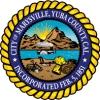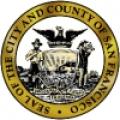Department: Ethics Commission
Job class: 0951-Deputy Director I
Starting salary range: $131,924.00 - $168,454.00 (Range A)
Role type: Permanent Exempt What does this mean?
Hours: Full-time
About:
Appointment Type
Permanent Exempt: Permanent exempt (PEX) position; individuals who are appointed to Exempt Positions are appointed at the pleasure of their appointing officer and are considered to be "at-will".
Specific information regarding this recruitment process are listed below:
- Application Opening: April 9, 2025
- Application Deadline: Continuous, earliest close 5:00 p.m. May 7, 2025
- Compensation Range: Range A compensation for this classification is between $131,924 and $168,454
- Recruitment ID: RTF0155723-01081660
About the Commission: The San Francisco Ethics Commission was created by the City’s voters with the passage of Proposition K in November 1993. Our mission is to practice and promote the highest standards of integrity in government. We achieve that by shaping and promoting compliance with the laws and by delivering impactful programs that promote fair, transparent, and accountable governmental decision making for the benefit of all San Franciscans. The Ethics Commission is responsible for the independent and impartial administration and enforcement of laws related to campaign finance, public financing of candidates, governmental ethics, conflicts of interest, and registration and reporting by lobbyists, campaign consultants, permit consultants, and major developers.
The successful candidate should expect to perform their duties in a hybrid work environment with at least three days onsite per week per current City policy. Additionally, any City employee may be called in for Disaster Service Work duty or to work onsite with 24-hours’ notice.
Role description
ABOUT THE ROLE
Reporting to the Executive Director, the Deputy Director will oversee department-wide administrative operations and strategic initiatives including organizational planning, program performance, budget development, financial accounting, procurement, contracting, human resources, recruitment, and other administrative functions. This role will supervise three staff members in the Operations Division and closely collaborate with other staff to achieve the Commission’s strategic goals.
The Deputy Director must be willing to forego involvement in all local political activity while a member of the Commission staff and publicly file an annual Statement of Economic Interests (Form 700).
ESSENTIAL DUTIES
Essential duties of the position include, but are not limited to the following:
- Establish and implement departmental goals, policies, and strategic plans as directed by the Executive Director.
- Develop and maintain a broad understanding of the Commission’s laws, policies, programs, procedures, and operations.
- Oversee daily administrative operations of the department including financial management, procurement, accounting, payroll, and related office operations.
- Effectively plan, coordinate, supervise, and evaluate the work of direct reports.
- Manage the department’s hiring initiatives including tracking vacancies, producing hiring-related documents, coordinating recruitment functions with staff and DHR, and supporting onboarding activities.
- Manage the department’s HR and personnel functions and lead initiatives to promote staff engagement and professional development.
- Direct the department’s annual budget development process by working with Commission staff and City stakeholders to get necessary funding approved through the City’s budgeting process.
- Track ongoing spending using the City’s financial systems and monitor adherence to the approved budget.
- Manage the department’s contracting needs and establish internal procedures and documentation for related business processes.
- Design and implement standardized workflows, procedures, documents, and tools for the Commission’s departmental business processes. Identify ways to improve business processes using automation.
- Establish effective metrics that inform the department’s operations and programmatic work in a data-driven manner. Develop processes to generate and track performance measures broadly across functions for leadership and staff, using automated tools in collaboration with the technology division.
- Manage services from other departments to support the Commission’s operations and serve as a liaison for departments and other stakeholders.
- Prepare management reports, annual reports, agency publications, and financial reports to provide regular progress updates regarding departmental goals and operations. Provide presentations at Commission meetings as needed.
- Maintain information on the Commission’s website, including budget, operational reports, and Commission information, in compliance with the City’s language access and digital inclusion standards.
- Support Commission-related operations including assisting with public meetings and onboarding new Commissioners.
- Act on behalf of the Executive Director when requested to provide business continuity for other programmatic and business functions.
- Maintain absolute confidentiality of sensitive information obtained through the course of completing assignments while working comfortably in an open government environment.
- Maintain and retrieve documents, records, and correspondence in accordance with established procedures for data retention and records requests.
- Establish and maintain effective professional relationships that foster an inclusive work environment and constructive problem-solving.
- Demonstrate sound independent judgment and the highest standards of integrity in carrying out duties.
- Perform other related duties and responsibilities as assigned.
How to qualify
Minimum Qualifications
- Bachelor's degree from an accredited college or university, AND
- Two (2) years of managerial experience in governmental ethics, campaign financing, and/or lobbying laws and regulations, all of which must include supervisory experience.
Substitution: Additional experience as described above may substitute for the required degree on a year for year basis up to a maximum of two (2) years.
Desired Qualifications
- A Master's degree in public administration, business administration, public policy, or a closely related field of study, or a juris doctor degree.
- Two or more years of demonstrated experience with public sector management, budgeting, financial accounting, procurement, contracting, and/or recruitment functions.
- Experience in the fields of campaign finance and governmental ethics.
- Experience working objectively, efficiently, and effectively under strict deadlines and highly visible, sensitive, or politicized settings.
- Extensive knowledge and expertise in organizational policies, systems, and issues in a government setting.
- Proficiency with computers and software applications, including with Microsoft Office tools, electronic filings systems, collaboration and project management tools (SharePoint, MS Teams, Jira or similar), financial & accounting systems, digital signature tools (DocuSign or similar), and content management systems (WordPress or similar).
- Familiarity with data analysis skills including advanced Excel, PowerBI, Tableau, or other statistical/analytics tools. Comfortable working with complex datasets and databases.
- Strong leadership and management skills and experience working effectively with diverse stakeholders in fast-paced, sensitive, and politicized settings.
- Ability to operate as an effective tactical and strategic thinker.
- Exceptional written and verbal communication skills with excellent presentation and organizational skills.
- Adaptability and flexibility in handling changing circumstances in dynamic work environments.
- Ability to plan, prioritize, exercise initiative, and complete multiple competing projects within established timeframes while also ensuring accurate, high-quality work products.
Verification
Applicants may be required to submit verification of qualifying education and experience at any point during the recruitment and selection process. If education verification is required, information on how to verify education requirements, including verifying foreign education credits or degree equivalency, can be found at https://sfdhr.org/how-verify-education-requirements
Note: Falsifying one’s education, training, or work experience or attempted deception on the application may result in disqualification for this and future job opportunities with the City and County of San Francisco.
All work experience, education, training and other information substantiating how you meet the minimum qualifications must be included on your application by the filing deadline. Information submitted after the filing deadline will not be considered in determining whether you meet the minimum qualifications.
Applications completed improperly may be cause for ineligibility, disqualification or may lead to lower scores.
The stated desirable qualifications may be considered at the end of the selection process when candidates are referred for hiring.
Selection Procedures: The selection process will include evaluation of applications in relation to minimum requirements. Applicants meeting the minimum qualifications are not guaranteed advancement to the interview. Depending on the number of applicants, the Department may establish and implement additional screening mechanisms to comparatively evaluate the qualifications of candidates. If this becomes necessary, only those applicants whose qualifications most closely meet the needs of the Department will be invited to participate in the next stage of the selection process. The stated desirable qualifications may be considered at the end of the selection process when candidates are referred for hiring
What else should I know?
Additional Information Regarding Employment with the City and County of San Francisco:
HOW TO APPLY
Applications for City and County of San Francisco jobs are only accepted through an online process. Visit https://careers.sf.gov/ and begin the application process.
- Select the “Apply Now” button and follow instructions on the screen
- Upload a Resume
- Upload a Cover Letter
A complete application must include application, cover letter and resume. Failure to include all three will result in disqualification.
Applicants may be contacted by email about this recruitment and, therefore, it is their responsibility to ensure that their registered email address is accurate and kept up-to-date. Also, applicants must ensure that email from CCSF is not blocked on their computer by a spam filter. To prevent blocking, applicants should set up their email to accept CCSF mail from the following addresses (@sfgov.org, @sfdpw.org, @sfport.com, @flysfo.com, @sfwater.org, @sfdph.org, @asianart.org, @sfmta.com, @sfpl.org, @dcyf.org, @first5sf.org, @famsf.org, @ccsf.edu, @smartalerts.info, and @smartrecruiters.com).
Applicants will receive a confirmation email that their online application has been received in response to every announcement for which they file. Applicants should retain this confirmation email for their records. Failure to receive this email means that the online application was not submitted or received.
Human Resources Analyst Information: If you have any questions regarding this recruitment or application process, please send your inquires to Nikki Chew, Sr. HR Consultant at nikki.chew@sfgov.org.
The City and County of San Francisco encourages women, minorities and persons with disabilities to apply. Applicants will be considered regardless of their sex, race, age, religion, color, national origin, ancestry, physical disability, mental disability, medical condition (associated with cancer, a history of cancer, or genetic characteristics), HIV/AIDS status, genetic information, marital status, sexual orientation, gender, gender identity, gender expression, military and veteran status, or other protected category under the law.






















